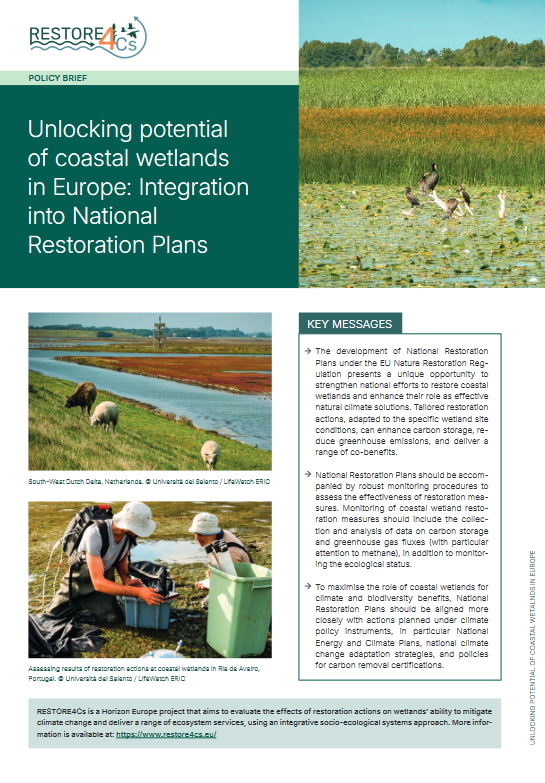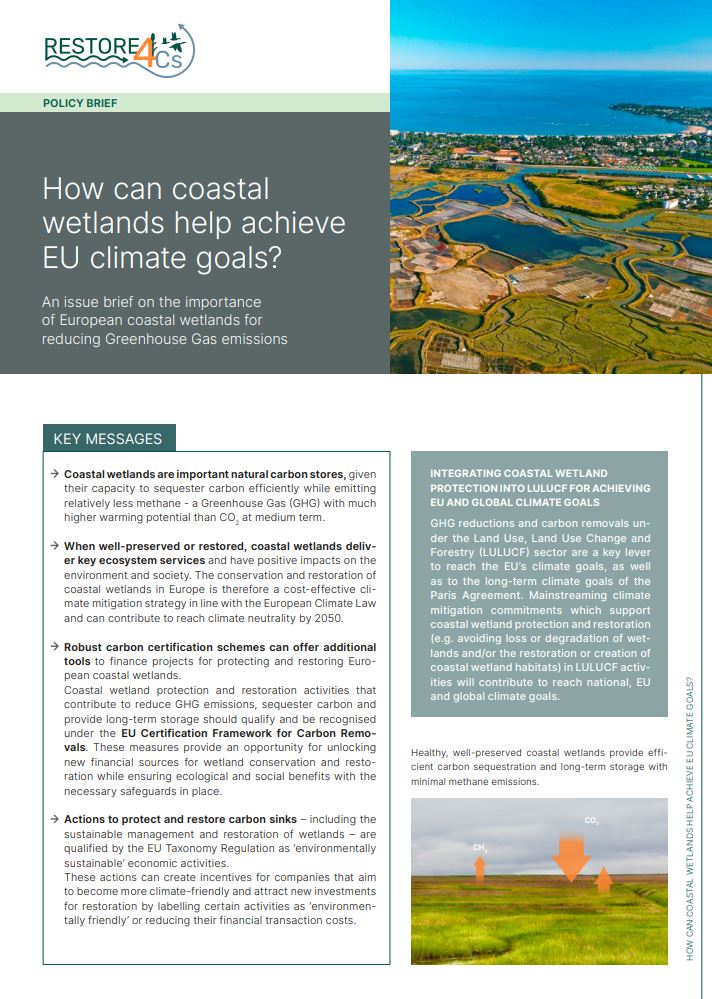Unlocking potential of coastal wetlands in Europe: Integration into National Restoration Plans
A Policy Brief from the RESTORE4Cs project
- Publication
- Citation
Kampa, E., Elkina, E., Otero, M., 2025. Unlocking potential of coastal wetlands in Europe: Integration into National Restoration Plans. Policy Brief. RESTORE4Cs project.
The second Policy Brief of RESTORE4Cs "Unlocking potential of coastal wetlands in Europe: Integration into National Restoration Plans", highlights the critical role of National Restoration Plans (NRPs) under the EU Nature Restoration Regulation in enhancing the restoration and resilience of coastal wetlands
The first draft National Restoration Plans are to be submitted by EU Member States by September 2026. To meet the short- and long-term ecosystem restoration targets set by the EU Nature Restoration Regulation, as well as to support the achievement of the EU's 2030 and 2050 biodiversity and climate goals, it is essential that coastal wetlands are effectively integrated into these planning instruments from the outset.
The Policy Brief outlines how NRPs can serve as a powerful mechanism to harness the climate and biodiversity potential of coastal wetlands.
Key messages of the 2nd RESTORE4Cs Policy Brief include:
- National Restoration Plans are a timely opportunity to scale up national efforts to restore European coastal wetlands. When tailored to their specific conditions, restoration of these ecosystems can offer vital natural climate solutions through improving carbon storage, reducing greenhouse gas emissions, and delivering multiple ecological co-benefits.
- Effective monitoring is essential. NRPs should include strong monitoring frameworks to track the outcomes of restoration activities. This includes not only assessing ecological status but also collecting data on carbon storage and greenhouse gas fluxes, especially methane, to evaluate climate benefits accurately.
- Better alignment with climate policies is needed. To fully leverage the potential of coastal wetlands, NRPs should be coordinated with national climate policy instruments such as National Energy and Climate Plans, national climate adaptation strategies, and carbon removal certification schemes.
This policy brief underlines that well-planned and monitored restoration of coastal wetlands is not only key for ecosystem health but also a strategic component of Europe's climate action and biodiversity goals.
The policy brief is available for download here.
This policy brief is a product of the RESTORE4Cs project, a Horizon Europe project in which Ecologic Institute participates. A consortium with 15 partners from 9 European countries aims to evaluate the effects of restoration actions on wetlands' ability to mitigate climate change and deliver a range of ecosystem services, using an integrative socio-ecological systems approach. Find out more about the project and its outputs here.





